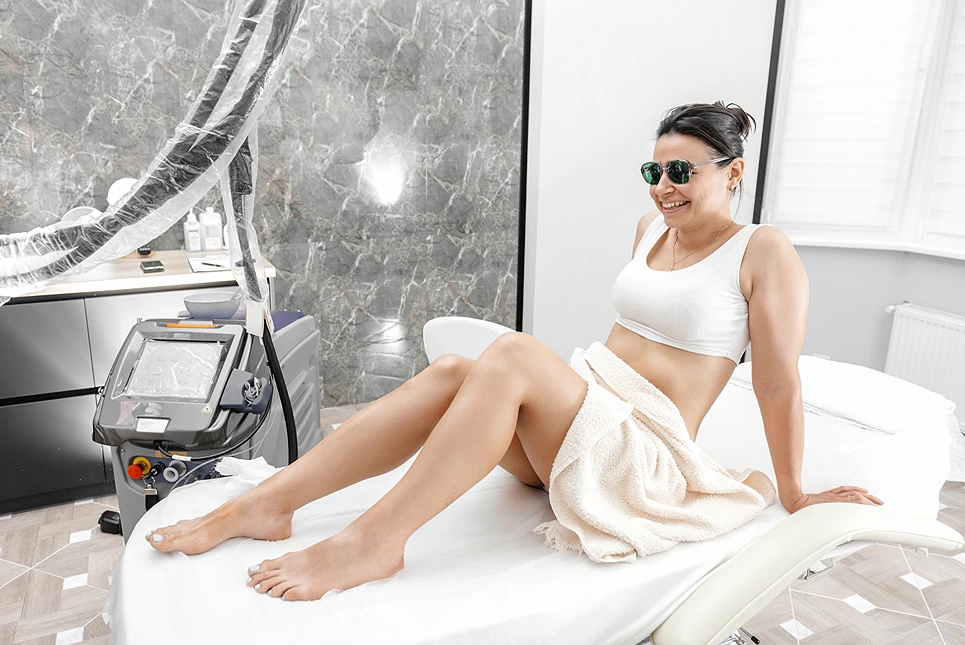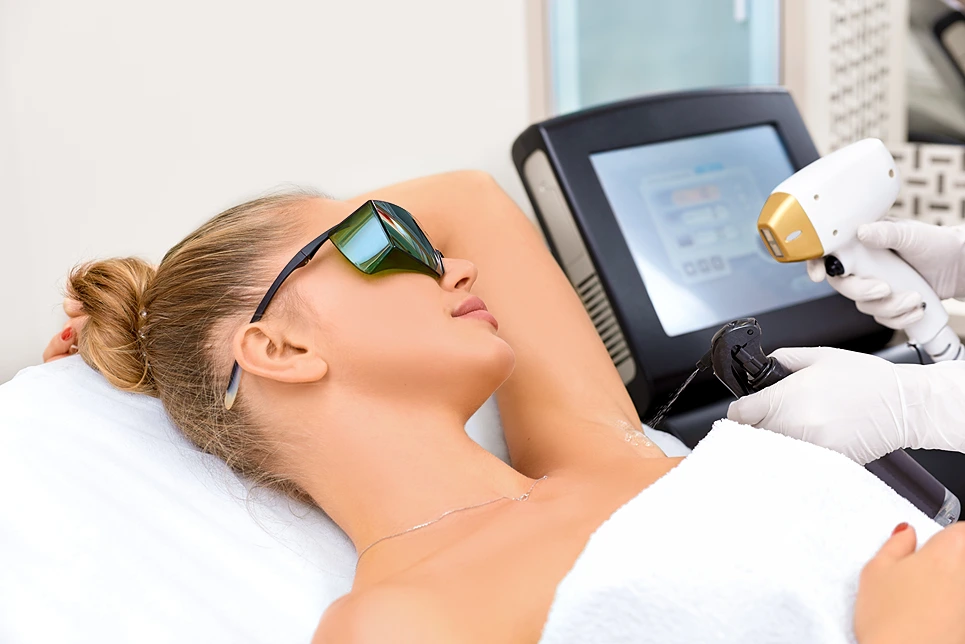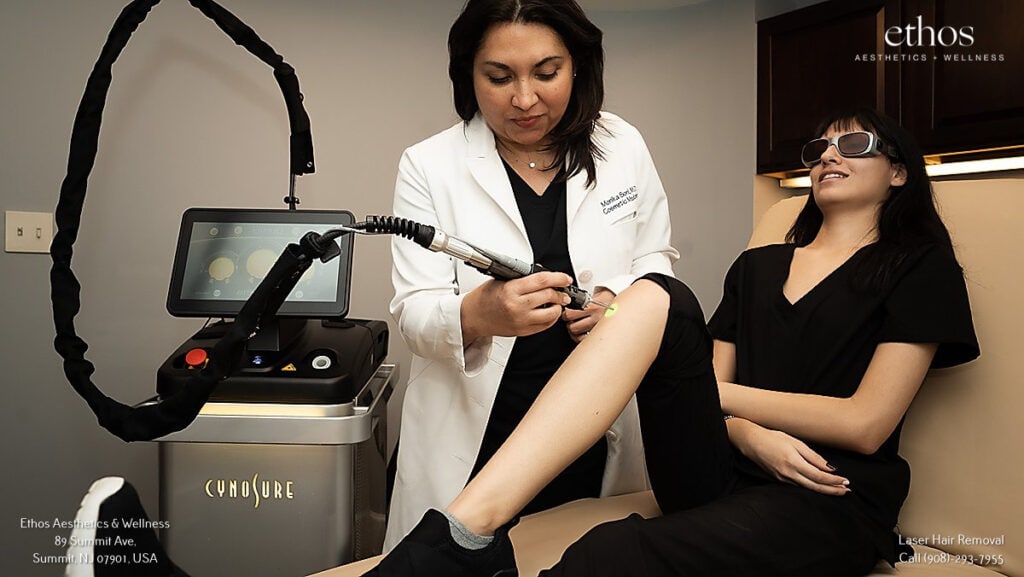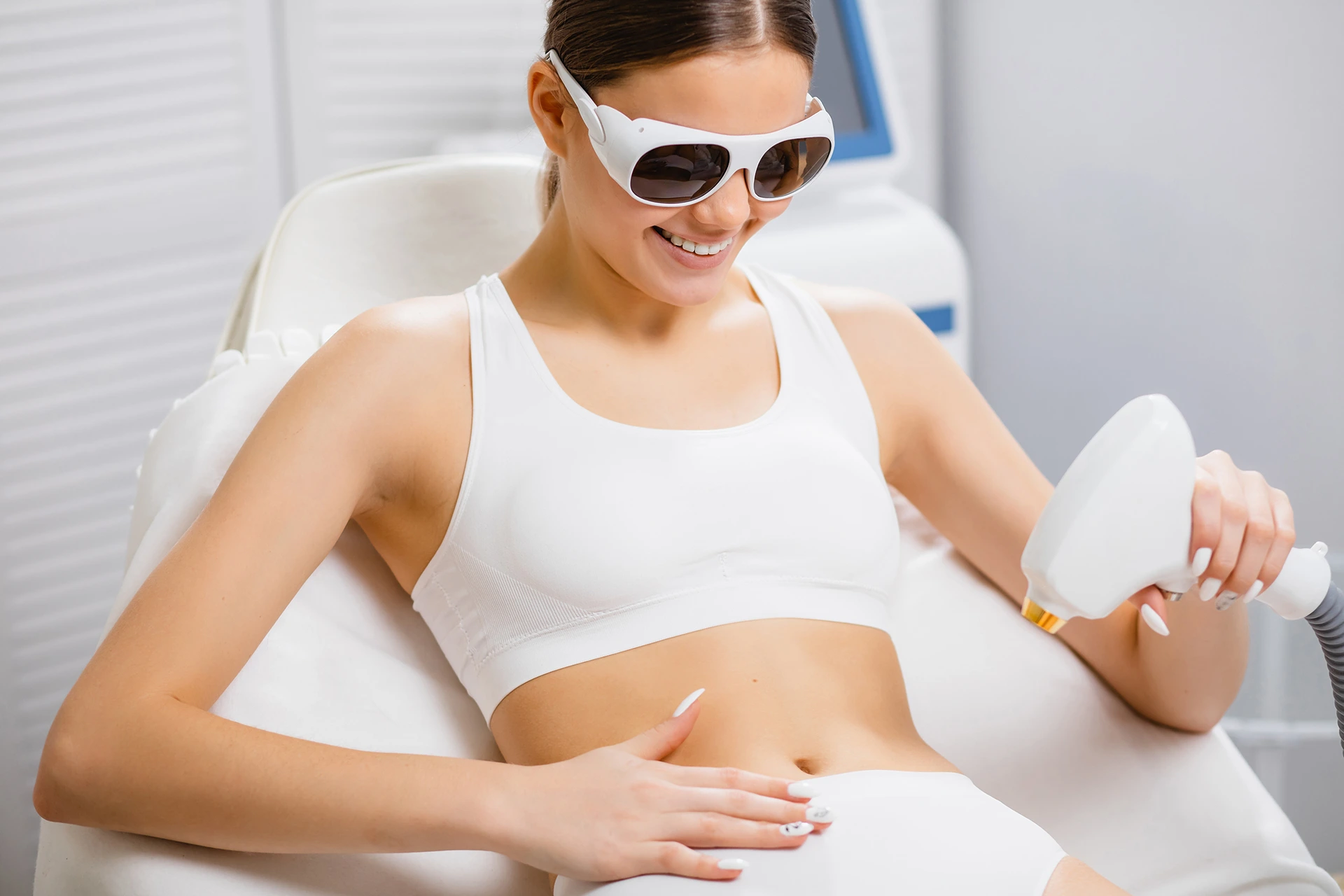A Comprehensive Guide on Undergoing Laser Hair Removal Treatments After Enjoying Time in the Sun
Summer is the season where we all want to soak up in the sun’s warm rays. But if you’re considering laser hair removal, you may be wondering if it’s safe to get treated after sun exposure. At Ethos Aesthetics + Wellness, we’re asked this question all the time.
While an occasional day at the beach or pool won’t interfere with your hair removal treatments, prolonged sun exposure requires some special care.
Here’s what you need to know about getting laser hair removal after sunbathing and how to best prepare your skin.
Why Sun Exposure and Sunburns Are Risky Before Laser Hair Removal

Laser hair removal utilizes focused beams of light that target melanin pigment in hair follicles. This heat damages the follicles to prevent future hair growth. But when your skin is darkened from UV rays, it contains more melanin.
This means the laser energy can absorb into your skin rather than just the hair. The consequences include:
- Increased Risk of Burns: Sun exposure makes skin hypersensitive. Laser hair removal also causes photosensitivity. Combined, this can lead to redness, stinging pain, blistering, and severe burns.
- Scarring & Skin Damage: If the laser penetrates too deeply into sunburned skin’s compromised surface, it can cause lasting scarring and damage. Avoid this risk by waiting until any burns have fully healed.
- Hyperpigmentation & Skin Discoloration: When laser light interacts with excess melanin in tanned or burned skin, it can spark post-inflammatory hyperpigmentation. This results in dark spots and discoloration that may be permanent.
- Decreased Hair Removal Efficacy: With darker skin from sun tanning, the laser has a harder time distinguishing hair pigment from skin pigment. This makes the treatment less selective and effective at removing hair.
When is it Safe to Get Laser Hair Removal After Being in the Sun?
Wait 2-3 Weeks After General Sun Exposure
If you’ve gotten some sun, like from regular outdoor activities, wait about 2-3 weeks before your next laser session. This gives your tan time to fade so there is optimal contrast between your skin and hair color.
Be sure to apply diligent sun protection during this waiting period to avoid further tanning.
Wait 4-6 Weeks After a Sunburn
If your skin is reddened and irritated from sunburn, wait a minimum of 4 weeks before treatment. Sunburnt skin needs time to fully heal and any blistering must be resolved.
The pigmentation and compromised top layer of a sunburn can increase complications like burns, scarring, and hyperpigmentation from the laser light. Let your skin rest before continuing hair removal.
Avoid Direct Sunlight for At Least 72 Hours
No matter your recent sun exposure, you should stay completely out of the sun for 72 hours leading up to your laser session. Even a slight tan can interfere with results, so give your skin a chance to return to its baseline pigment.
Seek Medical Guidance After Severe Burns
In the case of a severe sunburn with swelling and blisters, it’s best to consult your doctor. Deep burns may require an even longer waiting period of 6-8 weeks before the laser is considered safe.
With the right precautions, moderate, indirect sun exposure and other activities shouldn’t affect your laser hair removal treatments. But prolonged direct sunlight can compromise the safety and efficacy of the laser.
Protect your skin and optimize your laser hair removal results by scheduling your treatment at Ethos Aesthetics + Wellness after proper sun care
Can I Still Get Some Sun Before My Laser Hair Removal Appointment?
We don’t recommend deliberate tanning or laying out before laser hair removal treatments. But we know a little sun exposure living life is sometimes unavoidable. Here are some tips:
- Apply broad-spectrum SPF 30 sunscreen daily to prevent tanning as much as possible. Reapply every 2 hours.
- Wear wide-brimmed hats, UV protective clothing, and seek shade whenever possible.
- Avoid extended exposure during peak sun hours between 10am and 4pm.
- Exfoliate skin 2-3 times a week leading up to appointment to remove dead skin and lingering tan.
- Stay completely out of the sun and use diligent sun protection for 72 hours pre-treatment.
- If you do get color, wait 2-4 weeks depending on depth of tan for it to fade.
With diligent sun protection and avoiding peak hours, you can likely enjoy occasional indirect sun without issues. But intentional tanning and burns always warrant waiting.
How to Prepare Skin for Laser Hair Removal After Sunbathing

If your skin is tanned from time in the sun, don’t panic. With the right prep, you can still undergo laser hair removal once a tan fades.
| Tips | |
| 1 | Wait the recommended 2-6 weeks depending on depth of tan. Be patient for full fading. |
| 2 | Avoid any additional sun exposure that would darken skin further. Wear sunscreen daily. |
| 3 | Gently exfoliate and use products with skin-brightening ingredients like vitamin C, niacinamide, AHAs, and retinol. |
| 4 | Stay hydrated and moisturize skin to enhance skin cell turnover. |
| 5 | If tan remains up to a week pre-treatment, consider light chemical peels or microdermabrasion to remove remaining pigment. |
| 6 | Tell your technician about any stubborn tanning so they can tailor settings and protect your skin. |
| 7 | Discuss options like switching to an Nd:YAG laser if tanning won’t fade in time. This wavelength is safer on darker skin. |
With proper preparation and communication, we can still make laser hair removal work safely if you’ve gotten some sun.
Prepare your skin for flawless results by following our expert skincare advice and booking your laser hair removal session
Aftercare Tips for Laser Hair Removal After Sun Exposure
The skin is highly photosensitive after laser hair removal treatments. So continuing sun protection is critical, especially if you had sun exposure leading up to your session.
Here are some aftercare tips:
- Avoid direct sunlight and tanning for 2-3 weeks after each treatment. Keep skin protected with clothing, shade, and SPF 30 broad spectrum, water-resistant sunscreen.
- Sun exposure can worsen common side effects like redness, itching, and irritation. It can also cause hyperpigmentation.
- Cool showers, no hot tubs or saunas, and gentle skin care will help soothe and heal sensitive areas.
- Disclose any post-treatment sun exposure to your technician so they can adjust settings accordingly or delay your next session until skin recovers.
- UVA/UVB light and heat can compromise your results and trigger burns, blistering, and scarring on post-treatment skin. Take precautions.
- Be diligent about sun protection before and after laser hair removal sessions to ensure the best experience and outcomes. Communicate with your provider if any issues arise.
Get Glowing, Healthy Skin with Ethos Aesthetics + Wellness

At Ethos Aesthetics + Wellness, your safety and satisfaction with laser hair removal is our top priority. We’ll walk you through all the steps to prep your skin properly around sun exposure.
Our state-of-the-art laser technology combined with our team’s experience delivers optimal, long-lasting hair removal with minimal discomfort. Schedule a free consultation today to get started.
Within our relaxing, spa-like office, we offer a wide array of the latest non-invasive aesthetic treatments to help you look and feel your best.
Book your Ethos Aesthetics + Wellness consultation today to learn more about our laser hair removal services and how we can work with your lifestyle and skin type for remarkable results.







